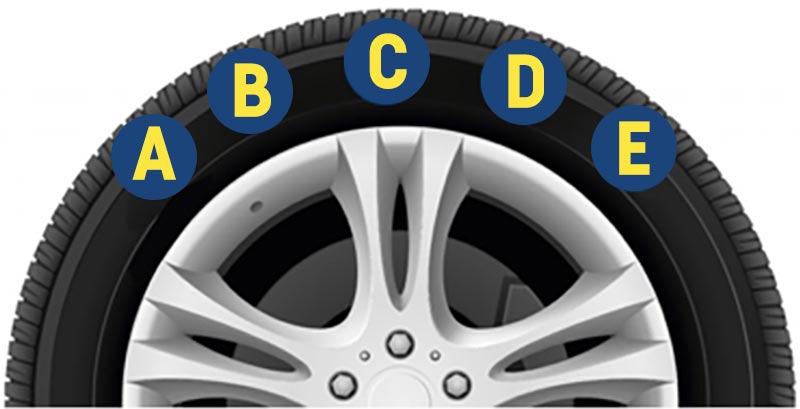
How do I know what pressure my tyres should be?
ExplainerAccording to a study by national highways, only 6 in every 100 people would check tyre pressures before venturing out on a long journey. As the only point of contact your vehicle has with the road, your tyres have been designed with this in mind, taking the brunt of any unexpected road conditions you might encounter. However without the correct inflation, you could be placing yourself and others at risk.
Incorrect tyre pressures not only pose a risk to the driver, but may also impact fuel efficiency, vehicle control, and the lifespan of your tyres.
Knowing what your tyre pressures should be

Vehicles come in all shapes and sizes, and the ideal pressure for your vehicle’s tyres can differ greatly depending on weight, size, rim, and vehicle type. So, it’s always recommended to consult your owner’s manual for the correct pressures. You may also refer to a sticker found on the driver or passenger’s side door well.
Different tyre pressures may differ depending on front and rear tyres, or any rim modifications that you may have added from the factory, so it’s also worth bearing this in mind.
How do you check your tyre pressure?
Checking your tyre pressure is easy! Check out our step-by-step guide below, or for a more visual experience watch Tyre Teacher Fuzz Townshend guide you here
- Check your car’s recommended tyre pressures using the sticker found in your driver’s door well or information in your owner’s handbook.
- Unscrew the valve cap from your wheel rim and press the pressure gauge into the valve hard enough that the hissing of air stops.
- If overinflated, remove the pressure gauge from the valve and press down on the metal pin with a screwdriver, slowly letting the air out while checking the pressures to ensure you’ve reached your car’s recommended levels.
- If underinflated, you can use an air compressor to refill. Press the compressor’s hose onto the stem of the valve until your PSI is at safe recommended levels.
The importance of tyre pressure
Your tyre pressures play an important role in the safety of you and your vehicle. According to a study by Highway England, under-inflated tyres make up 18% of accidents on the road. Impacting traction and braking distance may be underestimated, which can increase the chances of an accident.
It’s also important to consider that both over and under-inflation come with risks and wear on your vehicle. So, when adding air to your tyres, ensure you know the best PSI for your vehicle using your vehicle manufacturer’s guidelines.
Signs of overinflated tyres

It may not be initially obvious that you have over inflated your tyres but it can eventually lead to future problems damaging your performance, traction and tyres.
Common signs of overinflation are:
- Uneven wear on the tread, due to having less uniform contact with the road.
- An uncomfortable driving experience, with less absorption of impact from the road.
- Your vehicle’s braking distance, puts you and others at risk.
Signs of underinflated tyres
If you are experiencing loss of air in your tyres, it may indicate more significant problems with your vehicle. For your safety, we recommend taking your vehicle to a local garage for inspection.
Common signs of underinflation are:
- Poor handling: Issues with your steering may be the first sign of underinflated tyres, so listen out for strange sounds from your car, and increased braking times.
- Cracking tyres: Caused due to extended use of your tyres while underinflated, cracking from the increased amount of friction gained from the resistance added when the tyre loses its shape.
- Stopping distances: If you find your vehicle is taking longer than usual to come to a stop, it could be an indication of low pressure.
Maintaining the correct tyre pressure is a crucial part of vehicle maintenance. Following the vehicle’s manufacturer recommendations can help provide safety for your vehicle and ensure the performance and longevity of your wheels. This means it is important to regularly check your pressures at least every month.
If you’re ever unsure about the right tyre pressure for your car or if you suspect an issue, make sure you reach out to your local landsail tyre dealer who will be able to support you further or reach out to us at info@landsailtyres.co.uk



